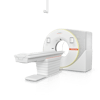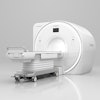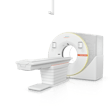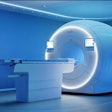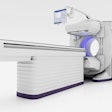CHICAGO – Building intelligent connections between people and technology can help make the radiologist’s role more important in healthcare, according to a speech made December 1 at RSNA 2024.
In his address to attendees, RSNA President Curtis Langlotz, MD, PhD, called for such a connection to establish meaningful collaborations between humans and machines in the world of radiology.
“These advances can upscale us all, reduce burnout, and bring better healthcare to underserved areas,” Langlotz said. “And it can do so while we develop richer human connections like the ones we form in the reading room, the exam room, and meetings like this one.”
Several years ago, the narrative heightened on AI surging into medicine and replacing radiologists altogether. While this has not happened, some radiologists may be skeptical of working in harmony with AI, despite what recent studies have highlighted about AI as an assistant.
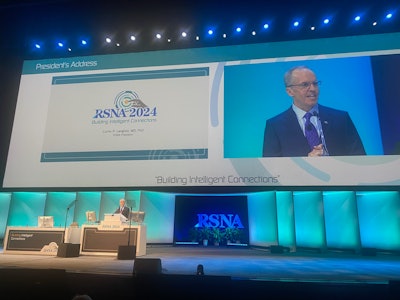 RSNA President Curtis Langlotz, MD, PhD, in his address to attendees discussed the benefits of building intelligent connections between radiologists and AI for better healthcare and patient outcomes.
RSNA President Curtis Langlotz, MD, PhD, in his address to attendees discussed the benefits of building intelligent connections between radiologists and AI for better healthcare and patient outcomes.
To illustrate this point, Langlotz told the story of a patient who in 2015 suffered a bicycle accident that resulted in chest injuries. The female patient, named Laine, was a former smoker who had chronic renal failure. Contrast-enhanced CT showed four nodule systems at the lung basis, but the interpreting radiologist deemed one to be a true-positive case.
Follow-up was scheduled, but Laine continued to have pain in the ensuing days. Radiographs taken five days later showed minimally displaced fractures in the ribs. These were visible in retrospect on CT.
When Laine went to a different facility for biopsy of the suspicious nodule, the facility needed her previous imaging scans. Laine had to travel back to the original facility and pay a fee for a physical CD with her images. However, the radiologist at the second facility found that the nodule was unchanged and the biopsy was canceled.
AI’s benefits in the clinic
New AI systems coming out yield benefits across the imaging lifecycle. Langlotz said these include predicting positivity rates among similar patients, lower radiation dose and imaging time, reducing repeat imaging, and decreasing length of stay, among others. These benefits can promote health equity, Langlotz said.
For the story of Laine, Langlotz said Laine could have benefitted from AI involvement in her case. These include the following: having medical record summarization to avoid complications, improving pain management via accurate fracture detection, better efficiency from predrafted reports, having a patient-friendly report for better understanding of radiology, and saved time and costs by using an online image exchange.
As for training algorithms, Langlotz said AI in radiology is close to a “ChatGPT moment” via sharp jumps in performance. He explained that training datasets used for medical AI systems “don’t even come close” to the size used to train ChatGPT and systems outside of medicine.
“This shows that there is a massive medical data gap, an over 100 times difference in the size of non-medical versus medical training data,” he said. “Even the data from just one institution can substantially close the data gap.”
How to get to a better world with AI
About three out of every four AI medical devices approved by the U.S. Food and Drug Administration (FDA) are geared toward use in radiology.
Langlotz said departments need to take several steps to achieve AI’s full potential in working alongside radiologists.
These include the following: ditching CDs and instead, using an internet database for image sharing, explaining AI better to patients to better encourage them to donate data to better train algorithms, and having a diverse team to better strategize AI’s use. Langlotz also highlighted the work of MIDRC, a multi-institutional collaborative initiative established in 2020 that aims to promote machine learning research through data sharing.
“AI will not replace radiologists, but radiologists who use AI will replace those who do not use AI,” he said.
Langlotz added that regulatory criteria need to be updated to better reflect the current state of medicine.
“Our current regulatory framework puts too much emphasis on the pre-market clearance process and not enough emphasis on what happens after models are deployed,” he said. “Our regulators are doing a great job under difficult constraints, but they’re laboring under a 50-year-old regulatory framework. It’s like trying to run a 2024 road race on the chassis of a 1976 Oldsmobile Cutlass.”
He also suggested departments use AI model cards, like a nutrition label for AI models, to help radiologists decide whether a model would work in their practice. For example, many of today’s models are trained on adult data but may be used in pediatric settings where they are not suitable.
“Model cards will help us avoid these pitfalls,” Langlotz said. “And we need a Consumer Reports for AI to provide unbiased comparisons of models, creating competition between vendors on accuracy and quality.”
He concluded that the secret to radiology’s success has “always been” the field’s embrace of new technologies. The field is in a pivotal position as healthcare care adopts these technologies, including AI, Langlotz said.
“The human-machine connection between radiologists and AI can enhance diagnostic accuracy and reduce workload, preventing burnout and freeing up time to do what we love to do,” he said. “We must continue to build these relationships.”
For full coverage of RSNA 2024, visit our RADCast.
